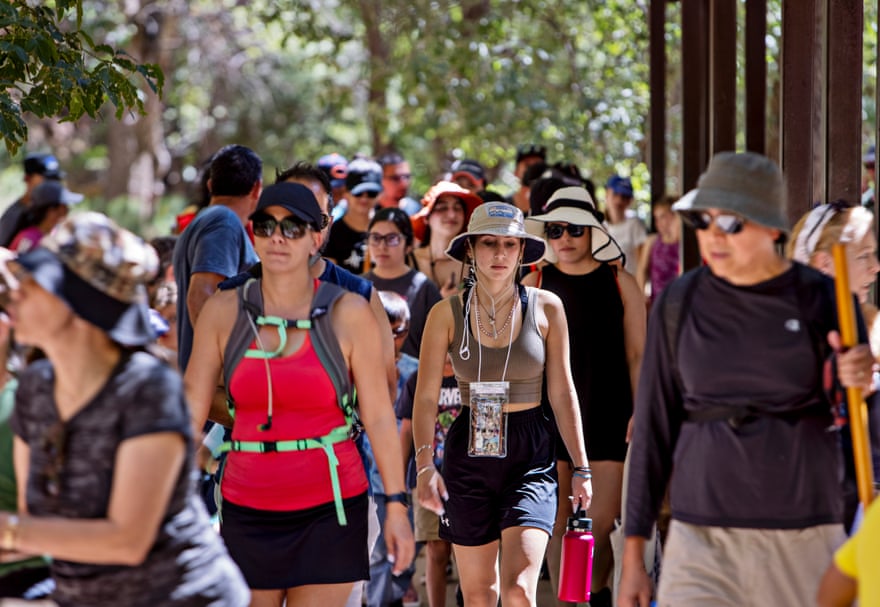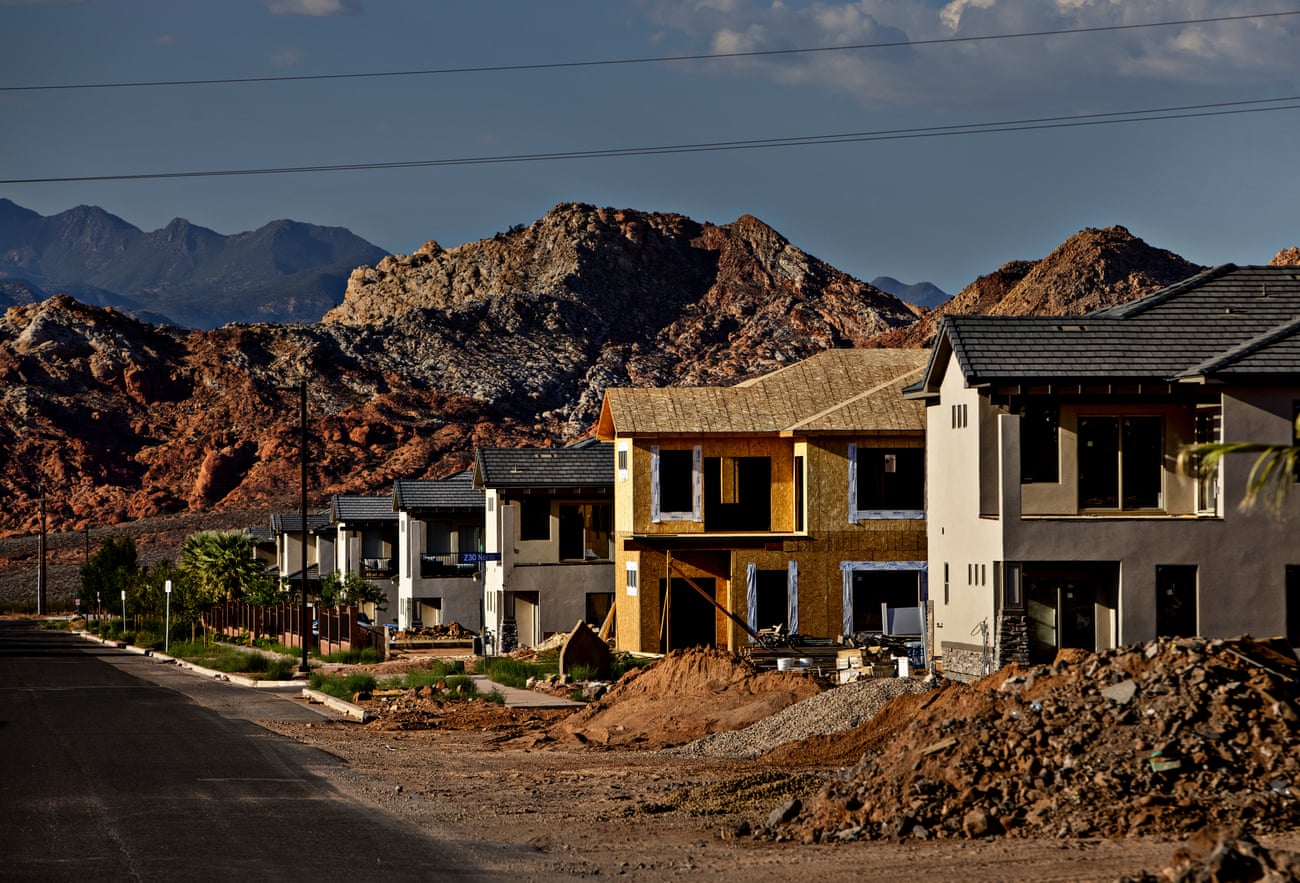Booming expansion to meet the demands of thousands of visitors every year is squeezing dwindling water supply
||| FROM THE GUARDIAN ||| REPRINT AT REQUEST OF ORCASONIAN READER
It was a typically hot summer day in Utah’s Zion national park, where early-afternoon heat hovered near 100F, even in the shadows of the red peaks soaring overhead. But the extreme conditions did little to dissuade the throngs of tourists who trudged into the chalky brown waters of the Virgin River.
The parking lot at Zion – one of the United States’s busiest national parks – had been full since 8am. Many of the visitors were there to scramble into the shallows of the Virgin River for the ever-popular and Instagrammable Narrows hike.

Visitors make their way toward the popular Narrows hike in Zion national park.
Thousands of tourists descend on this waterway year after year, even as this region and others across the American west fall deeper into drought. Fueled by the climate crisis and the overuse of dwindling water resources, the drought threatens the safety and sustainability of the spectacular sights; at the same time, tourists and the industries that cater to them contribute to an unfolding crisis in the cherished lands that brought them there.
“The point is not just how out of touch tourists are when they come and visit,” says Martha Ham, an environmental advocate with non-profit Conserve Southwest Utah, noting the lush lawns in surrounding residential developments. “We are not facing [the fact] that we live in a desert or dealing with what our natural limits are,” she said. “It is a historic problem and it catches up with you. It is catching up with us here.”
Just beyond the park, the once-sleepy city of St George is rapidly expanding. Tucked into one of the hottest and driest corners, in south-west Utah, the gateway community is the fastest growing city in the US. Tourism has fueled new residential growth and businesses in an area that could soon see water shortages – and it’s only expected to get worse.
Though there have been recent moves to try to curb consumption, Utah already has the highest per-capita water usage in the country. In Washington county – home to Zion and St George – usage was an alarming 285 gallons a person a day in 2020, more than double what those in Las Vegas, just hours to the south, use.
“We have had that infamous distinction for three decades,” said Zachary Frankel, executive director of the non-profit, Utah Rivers Council, noting that water managers have also kept water rates exceedingly low, so that residents and businesses in Utah also have the cheapest water in the country – which doesn’t help slow demand.
“There’s a cowboy-level of understanding of water that is not very sophisticated – and not very sustainable,” Frankel added.
While western states grapple over how to ration the rapidly declining water resources and how to secure a future in which the climate crisis is driving aridification and severe storms, in this part of Utah, the churn of new construction hasn’t slowed. As new homes and resorts march deeper into the desert, officials are searching for new sources of water as it grows more scarce in the drought-stricken American west.

A new development being built outside of St George, Utah.
“Our city officials are trapped because they borrowed money, they made plans for growth – they are in a hell of a bind,” Ham said. “There are also economic consequences in the battle charge of, ‘We have to save our economy.’”
Rampant growth may come at the highest price, she added. “It’s a boomerang.”
Stopped under a strip of shade, the Fullmer family looked back on the four miles of gurgling waterway they’d travelled hours from Las Vegas to trek through. Heath Fullmer said he hadn’t visited Zion for 15 years but the landscapes still felt familiar. What had changed, he said, was the surrounding community.
“The area in town is really different,” he said, adding that the tourist hub was smaller and quieter in his memory. “It used to be less commercial.”
New resorts have sprouted across Utah over the last decade, and their lush lawns and water-intensive amenities now dot the desert landscapes. It didn’t happen accidentally. Utah has worked hard to promote the state as a top-notch destination. In St George alone, the tourism board has invested roughly $25m over the last ten years to improve local amenities. There are 13 golf courses in just a 20-mile radius near Zion, which has drawn visitors and new residents.







